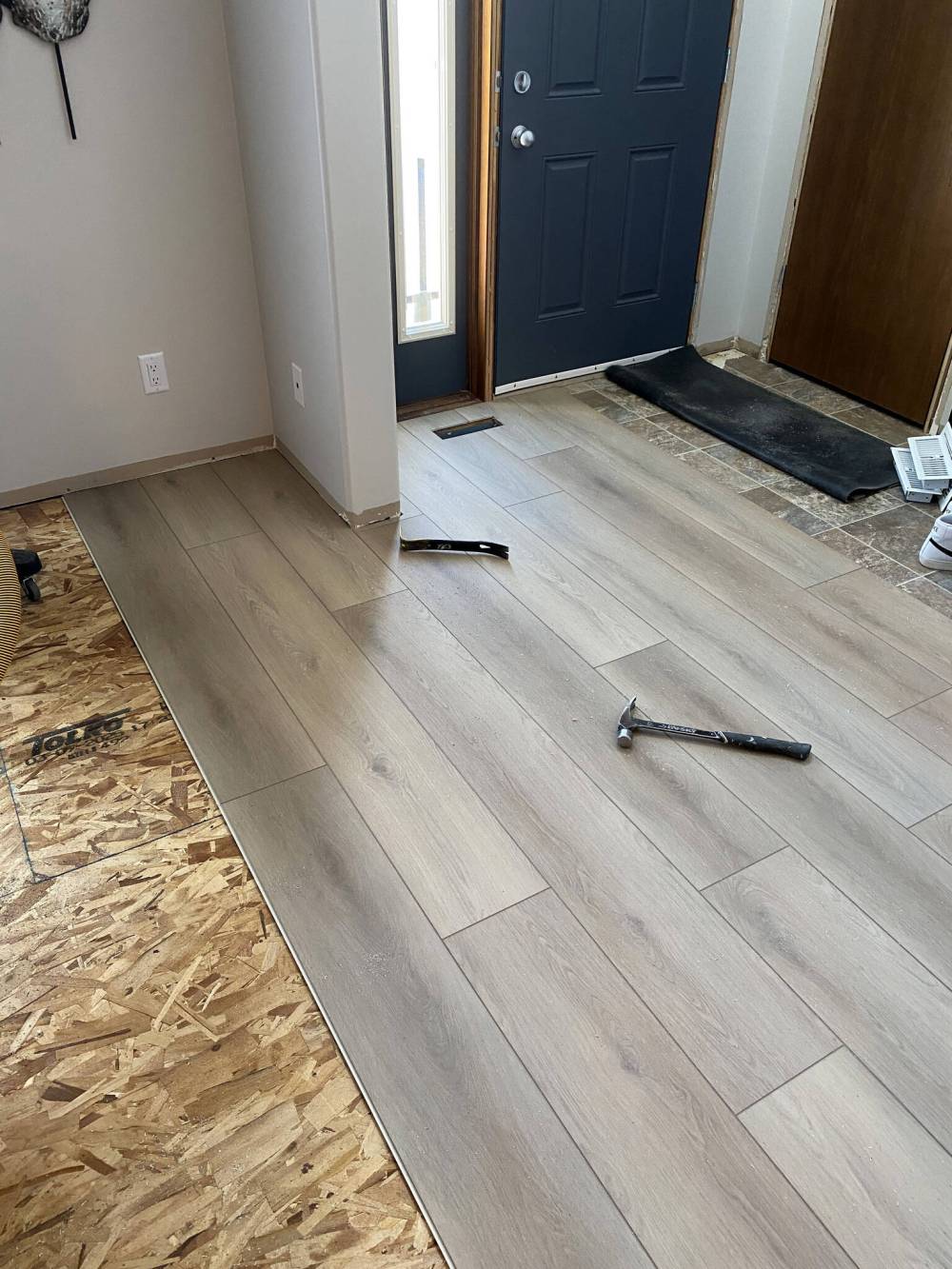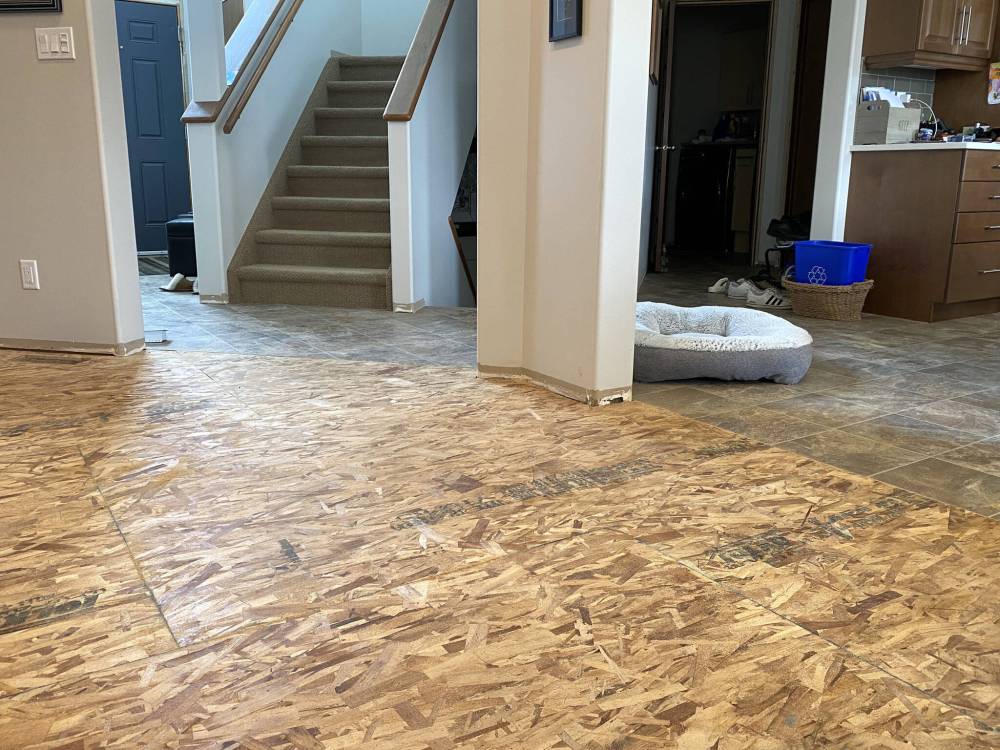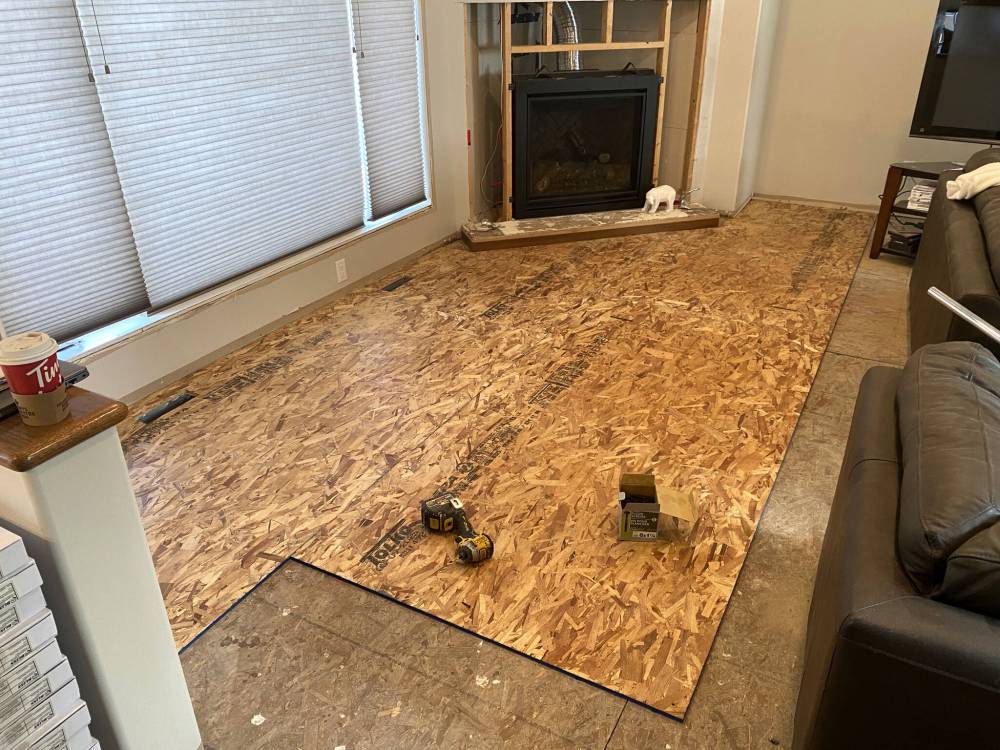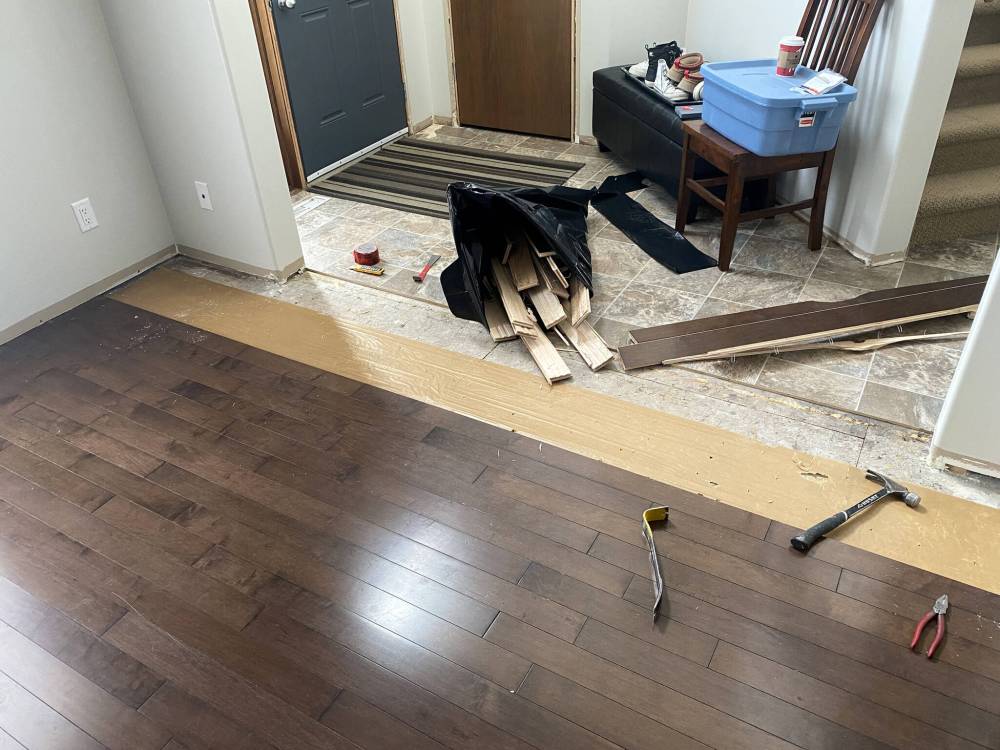On the level?
Re-flooring process can be tricky when existing sub-floor elevations vary
Advertisement
Read this article for free:
or
Already have an account? Log in here »
To continue reading, please subscribe:
Monthly Digital Subscription
$1 per week for 24 weeks*
- Enjoy unlimited reading on winnipegfreepress.com
- Read the E-Edition, our digital replica newspaper
- Access News Break, our award-winning app
- Play interactive puzzles
*Billed as $4.00 plus GST every four weeks. After 24 weeks, price increases to the regular rate of $19.00 plus GST every four weeks. Offer available to new and qualified returning subscribers only. Cancel any time.
Monthly Digital Subscription
$4.75/week*
- Enjoy unlimited reading on winnipegfreepress.com
- Read the E-Edition, our digital replica newspaper
- Access News Break, our award-winning app
- Play interactive puzzles
*Billed as $19 plus GST every four weeks. Cancel any time.
To continue reading, please subscribe:
Add Free Press access to your Brandon Sun subscription for only an additional
$1 for the first 4 weeks*
*Your next subscription payment will increase by $1.00 and you will be charged $16.99 plus GST for four weeks. After four weeks, your payment will increase to $23.99 plus GST every four weeks.
Read unlimited articles for free today:
or
Already have an account? Log in here »
The upgrade to vinyl-plank flooring has been popular over the past few years.
Not only is it available in a wide range of styles and colours, vinyl planking with underlayment pre-mounted on the underside is relatively easy to install, provided the existing sub-floor is prepped properly. This initial step is crucial for successful installation, and can quickly become complicated when an area due for upgrade reveals non-uniform sub-floor elevations.
At a current job site, the homeowners wished to remove all existing flooring to introduce new grey-tone wood-grain vinyl planking that would be contiguous throughout the main floor — a seemingly simple request that actually came with some interesting implications.

MARC LABOSSIERE / FREE PRESS
Once the sub-floor elevation is made consistent, vinyl-plank installation can begin.
There were currently three types of flooring on the home’s main floor. Old linoleum, which accounted for roughly 60 per cent of the square footage on the main floor, was found throughout the main hall, kitchen area, main-floor bathroom and rear laundry area near the garage door.
Carpeting had been installed adjacent to the kitchen area, while three-quarter-inch hardwood had topped the formal dining room’s floor.
During the installation process of these three flooring types years ago, steps had been taken to ensure all the flooring met at a uniform elevation.
However, due to the installation requirements of the varying flooring types, the existing sub-floor had been modified in certain areas to compensate for the differing thicknesses of the old flooring to ensure they all met at the same height.
The old hardwood had been installed directly onto the main three-quarter-inch sub-floor, as was the old carpet atop the underlayment. The areas of linoleum however, required secondary sub-flooring to be mounted atop the main sub-flooring to raise the height by three-eighths of an inch before the thin linoleum was installed.

MARC LABOSSIERE / FREE PRESS
Adding secondary sub-floor in areas adjacent to existing flooring provides a level surface throughout.
As such, 60 per cent of the main floor was three-eighths of an inch higher than the other areas, plus another 16th of an inch due to the thickness of the linoleum itself.
The big dilemma is always the same in these situations — should the secondary sub-floor be removed, or should the other areas be built up?
At a previous job site, the decision was made to remove the existing secondary sub-flooring throughout, in order to maintain the same elevation along the main sub-floor before the vinyl-plank installation began.
The reasoning was simple: There were very few areas of secondary sub-floor, accounting for only 20 per cent of the total square footage. At this latest job site, the square footage in question was considerably higher. Moreover, the prospect of lowering the entire area by removing the secondary sub-flooring had very negative implications in the kitchen, where all of the existing lower cabinets and the island had been installed atop the linoleum. Removing it made no sense.
As such, in this instance it made better sense to simply add secondary sub-flooring everywhere else.

MARC LABOSSIERE / FREE PRESS
OSB boards meet the existing elevation of three-eighth-inch underlayment, plus linoleum thickness.
Once the carpeting was completely removed, the underlayment was also extracted along with the plethora of staples that had held it in place. The hardwood boards were then lifted up with a pry bar and discarded one by one, removing any stubborn staples along the way.
With both non-linoleum areas prepped, it was easy to confirm the elevation difference was indeed seven-16ths of an inch. After calculating the square-footage of secondary sub-floor needed, 14 OSB boards at seven-16ths-of-an-inch thickness were delivered to the job site.
Starting at one end, these boards were laid into position and secured using one-and-a-quarter-inch floor screws. The new secondary sub-flooring along the three walkway transitions met perfectly flush adjacent to the existing secondary sub-floor with linoleum. And once the new sub-flooring was laid throughout the entire space, the vinyl-plank installation could begin along a now seamlessly level sub-floor.
Not all vinyl-installation approaches are the same. Many homeowners have elected to lay vinyl atop existing hardwoods, because hardwoods provide a very rigid surface. This approach saves time and money by eliminating the hardwood-removal stage.
Moreover, the hardwood remains in place, should there be a future desire to remove the vinyl and once again reveal the old wood floors.

MARC LABOSSIERE / FREE PRESS
The carpet and hardwood flooring removal revealed a sub-floor elevation discrepancy prior to vinyl-plank installation.
The process is trickiest when the existing sub-floor scenario exposes differing elevations. If the vinyl is to be contiguous throughout, the sub-floor elevation must be as well. The question then becomes, should the existing secondary sub-floor be removed, or should new secondary sub-flooring be added? The answer should be clear upon careful inspection of the factors involved.
RenoBoss.Inc@outlook.com

